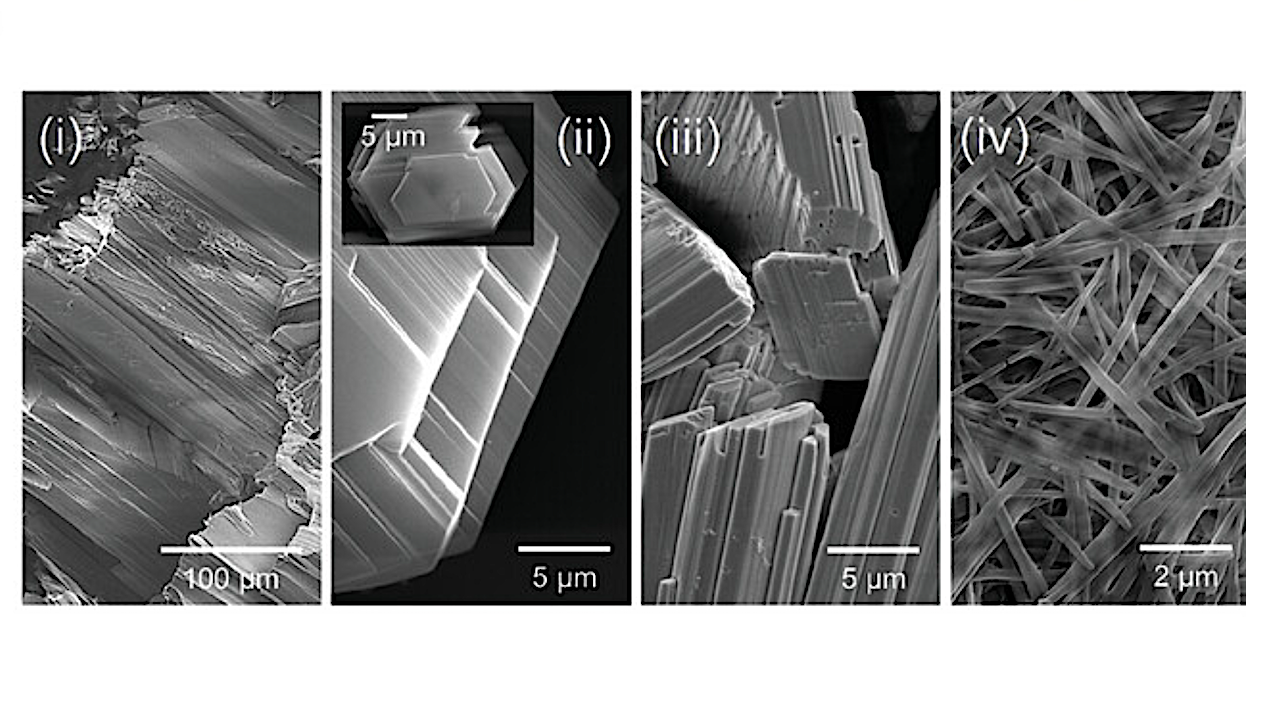Research Takes Us A Step Closer To Sustaining Human Life On Mars

Researchers at the University of Sussex have discovered the transformative potential of Martian nanomaterials, potentially opening the door to sustainable habitation on the red planet.
Using resources and techniques currently applied on the International Space Station and by NASA, Dr Conor Boland, a Lecturer in Materials Physics at the University of Sussex, led a research group that investigated the potential of nanomaterials – incredibly tiny components thousands of times smaller than a human hair – for clean energy production and building materials on Mars.
Taking what was considered a waste product by NASA and applying only sustainable production methods, including water-based chemistry and low-energy processes, the researchers have successfully identified electrical properties within gypsum nanomaterials – opening the door to potential clean energy and sustainable technology production on Mars.
Dr Conor Boland, said:
“This study shows that the potential is quite literally out of this world for nanomaterials. Our study builds off recent research performed by NASA and takes what was considered waste, essentially lumps of rock, and turns it into transformative nanomaterials for a range of applications from creating clean hydrogen fuel to developing an electronic device similar to a transistor, to creating an additive to textiles to increase their robustness.
“This opens avenues for sustainable technology – and building – on Mars but also highlights the broader potential for eco-friendly breakthroughs here on Earth.”
To make the breakthrough the researchers used NASA’s innovative method for extracting water from Martian gypsum, which is dehydrated by the agency to get water for human consumption. This produces a byproduct called anhydrite—considered waste material by NASA, but now shown to be hugely valuable.
The Sussex researchers processed anhydrite into nanobelts – essentially tagliatelle-shaped materials – demonstrating their potential to provide clean energy and sustainable electronics. Furthermore, at every step of their process, water could be continuously collected and recycled.

Processing and Basic Characterization of Minerals. Optical photograph of the raw, bulk a) selenite and b) satin spar minerals. c) Graphical scheme depicting the procedural steps applied to process the raw minerals into a powder, which underwent a series of cleaning steps to yield bassanite powder that was liquid exfoliated to create anhydrous nanobelts. d) Optical photograph of an (left) anhydrous selenite and (right) anhydrous satin spar suspension. e,f) Scanning electron micrograph collage showing the various morphological stages of selenite and satin spar mineral during processing and exfoliation. Left to right: (i) as received bulk material, (ii) raw bulk powder, (iii) cleaned powder/bassanite powder, and a (iv) liquid exfoliated anhydrous nanobelt network. g,h) Raman spectra of selenite and satin spar samples during their various stages of crystal structure. i) X-ray powder diffraction spectra comparing the crystal structure change between the bulk powder and the nanobelts. j) X-ray photoelectron spectroscopy confirming the elemental composition of the nanobelt materials. Dashed lines denote peaks related specifically to oxygen, silicon, carbon, and calcium. — University of Sussex
Dr Boland added:
“We are optimistic of the feasibility of this process on Mars, as it requires only naturally occurring materials – everything we used could, in theory, be replicated on the red planet. Arguably this is the most important goal in making the Martian colony sustainable from the outset.”
While full-scale electronics production may be impractical on Mars due to the lack of clean rooms and sterile conditions, the anhydrite nanobelts hold promise for clean energy production on Earth, and could, later down the line, still have a profound effect on sustainable energy production on Mars.
Quasi–1D Anhydrite Nanobelts from the Sustainable Liquid Exfoliation of Terrestrial Gypsum for Future Martian-based Electronics, Advanced Functional Materials (open access)
Astrobiology, Synbio, nanotechnology








